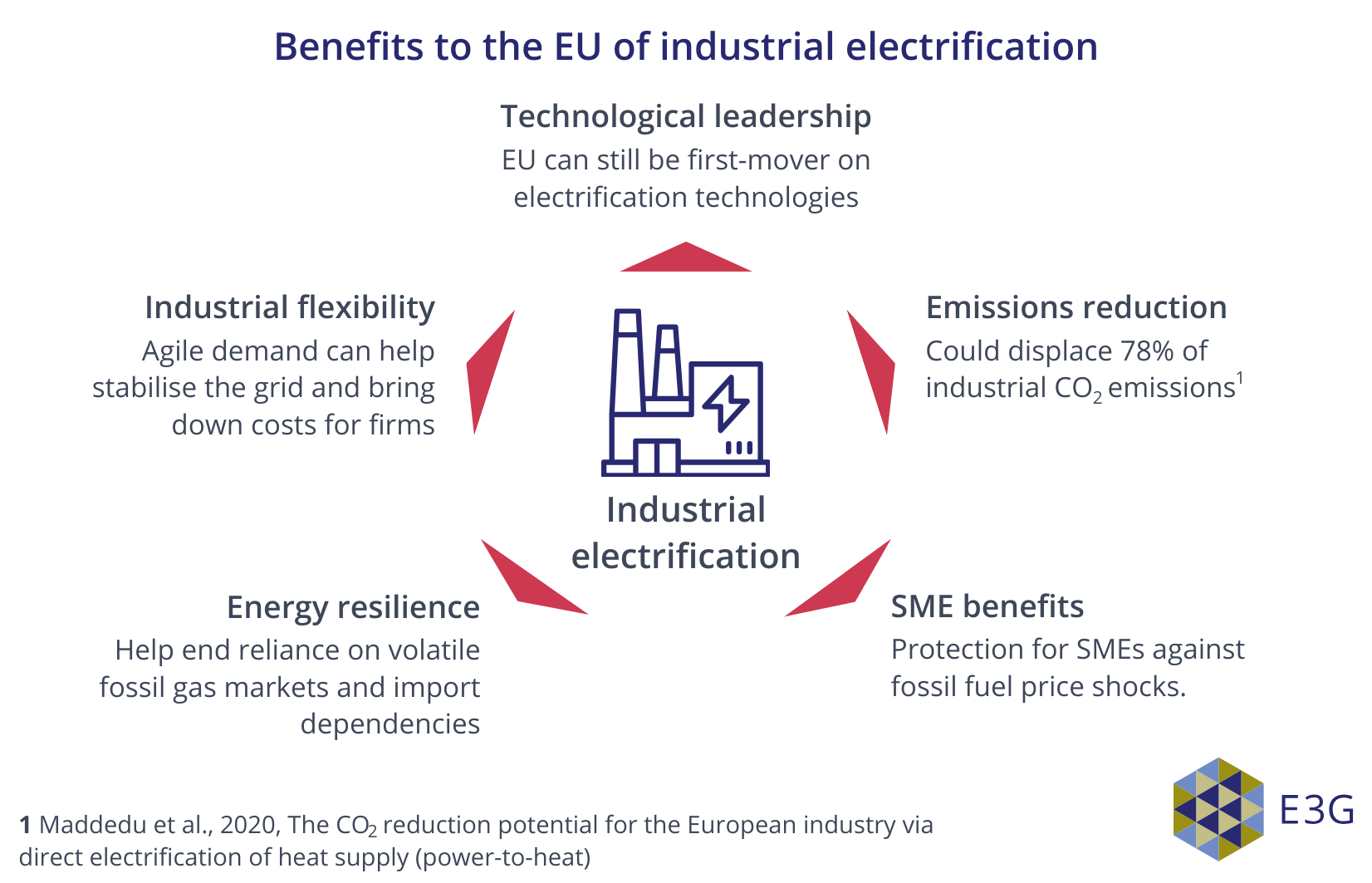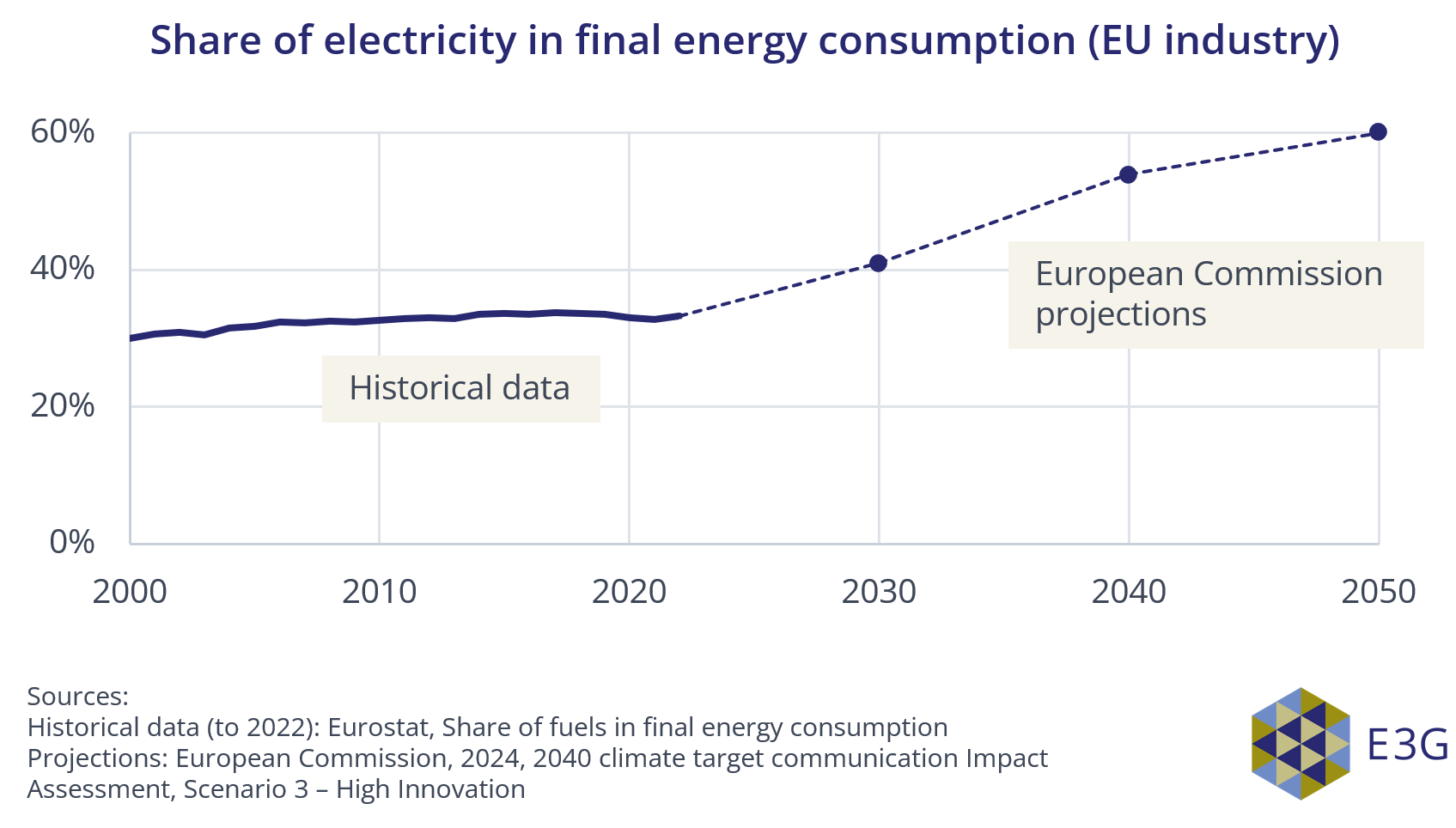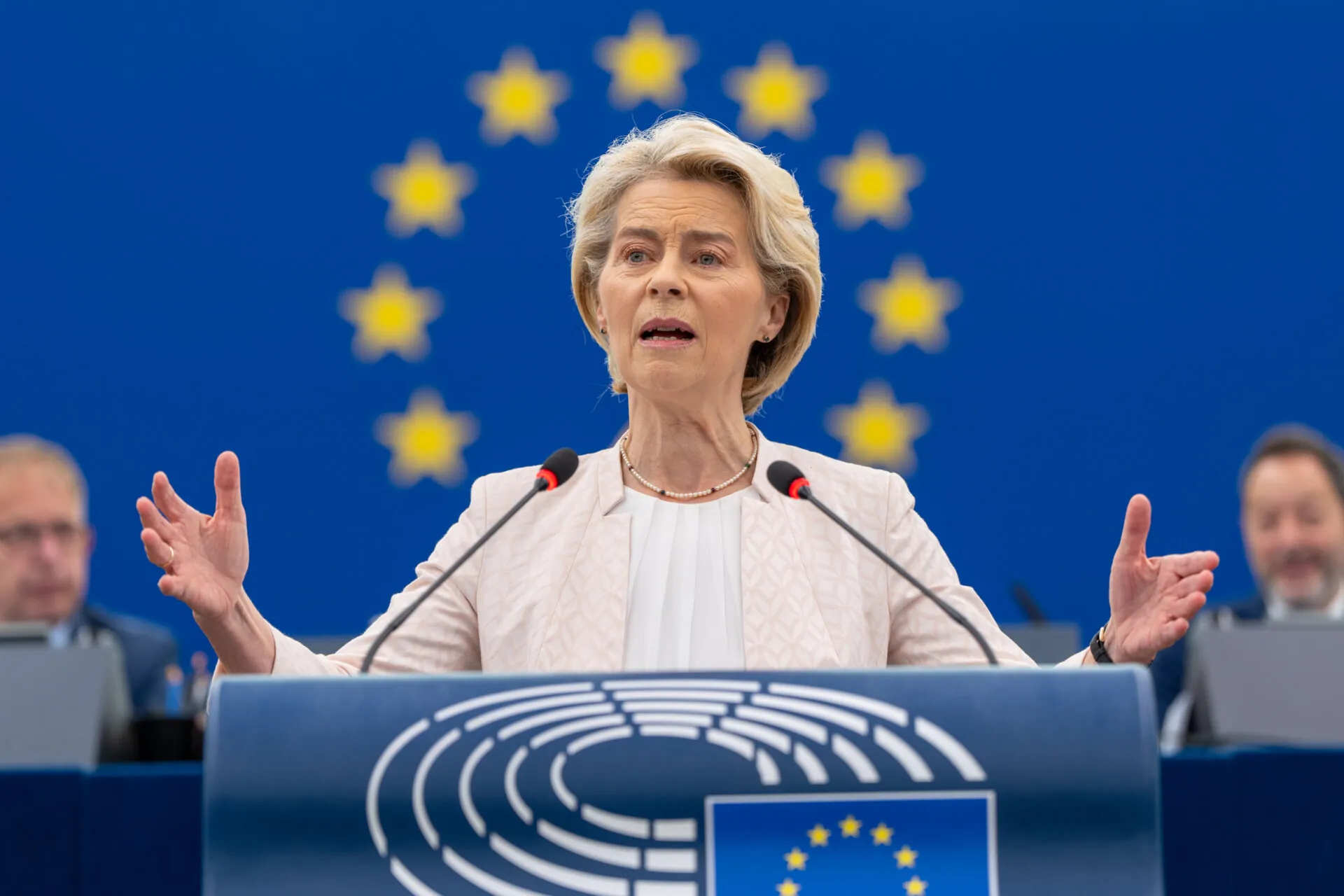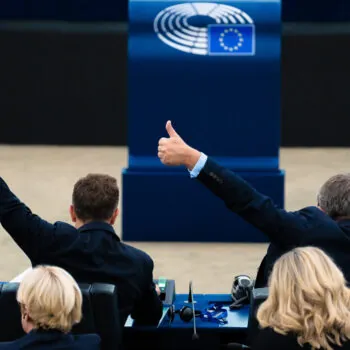The new European Commission is expected to deliver on several political priorities, including supporting the decarbonisation and competitiveness of EU industry, maintaining technological leadership, and ensuring energy resilience. Concerted action to enable direct industrial electrification, overlooked so far, can contribute to all these objectives. The upcoming Electrification Action Plan is a unique opportunity to get the right policy framework in place.
This briefing argues that industrial electrification can contribute to addressing a range of the EU’s top concerns, and can become a core pillar of the Clean Industrial Deal. It can decarbonise most industrial processes, given the potential to directly electrify an estimated 90% of remaining industrial energy demand.
Other benefits of decisively backing direct industrial electrification are:
- If Europe manages to create sufficient scale through lead markets, it could still lead technologically using first-mover advantage in industrial electrification where markets are less saturated.
- Crucially, the more electrified the energy system, the greater its resilience against global fossil fuel price shocks will be.
- Electrifying will unlock new, modern industrial flexibility, helping some businesses cut costs. This is desperately needed in an era where the energy system is increasingly based on intermittent energy sources as conventional power plants are pushed out of the merit order.

Direct electrification of industrial processes has so far been stifled by high electricity costs. Difficulties integrating the technologies into specific sites also impact capital costs. On top of this, domestic EU manufacturing capacity of these technologies is currently not prepared for mass adoption by industry. Grid connections are also hard to come by; conversely, the uncertainty over future industrial electricity demand is making network planning complicated.

So far, the industrial decarbonisation policy framework has not provided the necessary signals for direct electrification. This is why regulatory clarity for electrification technology producers, industrial off takers and network operators is needed. A supportive framework will also be particularly helpful to small and medium-sized enterprises (SMEs) – where directly electrifying is often a key mitigation pathway – which will soon feel the pinch with the introduction of the EU Emissions Trading System (ETS) II. These challenges can all be addressed by the proposed Electrification Action Plan.
Policy recommendation for the EU Electrification Action Plan:
- Technology Deployment and Monitoring: Establish a comprehensive manufacturing plan for electrification technologies. This should include monitoring structures to track progress and ensure a qualified workforce is available for manufacturing, installation, and maintenance roles. Dedicated funding instruments, such as the Innovation Fund, should focus on small and medium-sized enterprises (SMEs) to facilitate their transition.
- Governance and Planning: Form an Industrial Electrification Alliance to foster collaboration among policymakers, industry stakeholders, and the R&D community. Setting aspirational targets for electrification in industrial processes will provide clarity and encourage investment. Additionally, integrating electrification indicators into National Climate and Energy Plans is crucial for long-term strategic alignment.
- Electricity Pricing: Finalise the Energy Taxation to incentivise electrification through improved network tariffs and levies. Address barriers that hinder industrial flexibility and explore options for Power Purchase Agreements (PPAs) to ensure price stability.
Read the full briefing.


